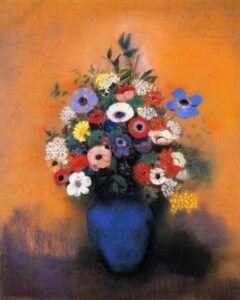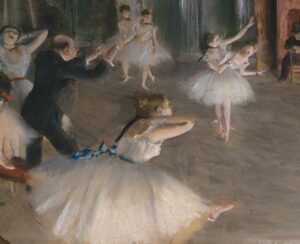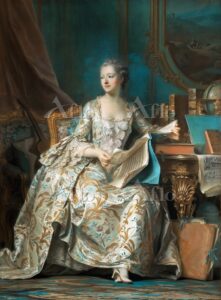Consultation on the purchase of original pastel paintings

I, Masahiko Yokota, am not currently selling original pastel drawings.
I would like to explain the reason for this.
As a matter of fact, when I was writing this text, I researched and found out once again that my reason for not selling my paintings is almost exactly the same as Taro Okamoto's belief that "paintings are not for sale".
Let me explain.
- The first reason is that I want to have the works on hand for a solo exhibition that I will hold in the near future.
- The second reason is that I have strong doubts about the fact that the artist will not receive a penny of profit when the price of the sold work rises in the market.
Many people have been trying to solve this problem using block chain technology for the past few years.
- The third reason is that Taro Okamoto believed, as he did throughout his life, that a painting is not for sale.
I believe that Banksy holds the same view, but I question the fact that a great work of art is appreciated daily by only one buyer.
If a work of art is excellent, wouldn't it be more desirable if it could be appreciated by as many people as possible?
Taro Okamoto's policy seems to have put him in a considerable financial predicament.
As a result, Taro Okamoto began to generate income through TV appearances, interviews, and other entertainment and literary-related work.
As a result, however, much of Okamoto's work remained at home, where it could be exhibited on a large scale at any time and be viewed by many people.
- The fourth reason was the idea that works of art, like music, should be enjoyed by as many people as possible, easily and inexpensively.
This is the main reason why I am focusing on the sale of giclee prints.
I have been heavily influenced by rock music such as The Beatles and The Rolling Stones, and Japanese popular music such as Tatsuro Yamashita(山下達郎), which is why I have taken this business stance.
However, there are those who still wish to purchase the original paintings.

Odilon Redon The Blue Vase, Mimosa and Anemone
"I would like you to paint a pastel work like this one in this size." or "I would like to purchase a work painted with acrylics or Japanese paints".
So from now on, I would like to sell these works, including creating new works and giving them away, if both parties agree to the terms and conditions.
However, as I mentioned earlier, due to my policy of selling artwork, I may not be able to immediately sell a large pastel painting I own for a higher price.
Odilon Redon painted many pictures of flowers in vases.
These flower paintings were very popular with collectors.
Therefore, I may start with a relatively small pastel painting like this one, which I will produce and deliver after consultation.
Conditions for selling original artwork
The conditions for selling original artwork are as follows
- Do not resell immediately after purchase or sell at auction for speculative purposes.
- Pastel paintings are sensitive to light, so please do not display them in direct sunlight.
- We would appreciate your cooperation as much as possible when we ask you to lend them out during Masahiko Yokota's large-scale solo exhibition.

As a businessman who sells things, these conditions may seem very self-serving.
However, Tomio Koyama Gallery(小山登美夫ギャラリー)is one of the primary galleries (galleries that sell new works and inventory of contract artists) that has supported the offensive of contemporary art in Japan, Mr.Tomio Koyama has said almost the same thing in his book.
Mr. Koyama says that when he sells a work of art, he gives it away on the condition that the artist "does not resell it immediately.
Even so, he says, some people resell them immediately after purchase.
If it were gold, stocks, or foreign exchange, there would be no problem.
However, I think it is lonely at heart to purchase a piece for the sole purpose of making money, expecting only resale or future price appreciation.
It is the opposite of buying for the purpose of making money when you are buying to enrich your heart, which money cannot get you.
In a TV program featuring Yoshitomo Nara(奈良美智), a foreign visitor to an art fair who wanted to buy an entire piece of artwork from the Tomio Koyama Gallery booth was looking at the work, and Mr. Nara, who was secretly watching from the shadows, said,
"He sounds like an idiot!"
Now I deeply sympathize with him.
Gagosian," which has reigned as the world's No. 1 gallery, does not allow prospective buyers to freely select works, and they can only purchase works by approaching the artist selected by Larry Gagosian.
The world's most famous galleries only sell their works to good customers who have a proven track record of taking good care of their works.
It is not something that can be bought freely as soon as you pay a lot of money.
Of course, if you are saying, "I'm buying because I like the work, but I also have high hopes for the future value of the work, and that's my goal as well."
I am willing to sell my work
◆Original artworks can be viewed at the classroom of Sapporo Web Programming School, which I am managing , so please feel free to contact us through this form.
here are only Redon, Degas, La Tour, and Chiyoji Yazaki(矢崎千代二). A painter of large pastel paintings that are extremely rare in history.
In the long history of art, there are no other painters who are considered masters of large pastel paintings except Odilon Redon of the Impressionist period, when Monet, Cézanne, Renoir, and others were active; Edgar Degas, famous as a painter of dancing girls; and Maurice Quintin de la Tour, who lived in the 16th century.
In Japan,Japanese Chiyonji Yazaki(矢崎千代二), who lived in the Taisho (大正時代)and Showa periods(昭和時代), is a representative artist who also co-developed Japan's first pastel, the Gondola Pastel(ゴンドラ パステル).
I don't know exactly why there are so few pastel painters (laughs).
Rather, I wonder why people don't paint with pastels and colored pencils in today's age of acrylic paints.
Why do I paint with pastels and colored pencils?
The biggest reason is that I can easily express the vivid, delicate, and lyrical colors of Japanese art, which can be expressed with iwa-enogu (mineral pigments) and suihi (dried pigments) of Japanese painting.
Redon and Degas were also heavily influenced by Japanese ukiyoe.
The colors of Redon, which Japanese art critic Kunio Motoe(本江邦夫) called "heavenly colors" that can only be described as a natural gifted talent," are difficult to achieve with oil paints.

In Japan,Japanese Chiyonji Yazaki(矢崎千代二), who lived in the Taisho (大正時代)and Showa periods(昭和時代), is a representative artist who also co-developed Japan's first pastel, the Gondola Pastel(ゴンドラ パステル).
I don't know exactly why there are so few pastel painters (laughs).
Rather, I wonder why people don't paint with pastels and colored pencils in today's age of acrylic paints.
Why do I paint with pastels and colored pencils?
The biggest reason is that I can easily express the vivid, delicate, and lyrical colors of Japanese art, which can be expressed with iwa-enogu (mineral pigments) and suihi (dried pigments) of Japanese painting.
Redon and Degas were also heavily influenced by Japanese ukiyoe.
The colors of Redon, which Japanese art critic Kunio Motoe(本江邦夫) called "heavenly colors" that can only be described as a natural gifted talent," are difficult to achieve with oil paints.

In fact, until I was 40 years old, I painted with oil and acrylic paints, some rock paints and water-dried paints, but I guess I am still Japanese.
I could not control the process of dissolving paints with oil or water and painting with a brush.
See the photo above of Redon's "Admiration of Leonardo da Vinci".
It really looks like a Japanese painting, doesn't it?
In fact, the paintings of Japanese painting masters such as the Kano school(狩野派)and the Rimpa school (琳派) are more subdued in color.
Ryuzaburo Umehara(梅原龍三郎), who was considered the emperor of the Japanese art world, said, "Redon's paintings are very Japanese and very beautiful. They are very pure and elegant, with No ambition to sell and make a lot of money." He said. (From Ten-i Muhou by Umehara, published by Kyuryudo 『天衣無縫』 求龍堂 梅原龍三郎著)
Ryuzaburo Umehara, who painted his masterpiece "Beijing Autumn Heaven" during his stay in Beijing, began to shift to Japanese painting using mineral pigments, saying, "I feel that mineral pigments are more beautiful than oil paints.

Kunio Motoe, an art scholar, called them "remarkable foresight.
It seems that the painters of the Kyoto art world (京都画壇)were struggling to find the next era of Japanese painting (日本画)in the face of the paintings of European artists, and the hint to break through this was "the work of Redon, which depicts abstract lines freely in colors like Japanese painting"?
What do you think? From the perspective of the goal of fusing and integrating Japanese and European colors and art, it makes perfect sense to paint with pastels on paper.
In fact, there is no other painting medium more suitable for this purpose. The only drawback is that it is not particularly suitable for large scale works due to its significantly less robustness.
Ladies and gentlemen, other than Redon, Degas, La Tour, and Chiyoji Yazaki(矢崎千代二), who are the masters of large pastel paintings?
I don't think so.
I hope you can understand how rare my relatively large pastel paintings are in the history of art and even today.
Consultation form for purchasing original artwork or custom-made artwork
